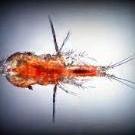-
Topics
-
Latest Update
-
0
Selling Nano Tank With FIlter and Chiller and Maxspect Jump L-130
Selling the above. All Items Used for 3 months only. 1.Tank and HOB FIlter. (Tank size: L38cm x W30cm x H 28cm). Selling for $50 2.Maxspect Jump L130. Selling for $60 3. Chiller good for 60l. Selling for $80 Take all for $160. FCFS Collection only, Bukit Batok. PM me to deal. -
2
Fluval Sea Marine & Reef LED 2.0
Upz Sent from my SM-N980F using Tapatalk -
225
WTS live rotifers, tigger pods, phyto
ups tele me at littlefishaqua location at tamp/hougang $50 worth of purchase foc delivery -
0
Corals to sell/give
Free - Have several GSP on tank wall. Can scrape and give to whoever wants Free several broken pieces of monti Also large size green monti for sale for $20 Zoa colony on rock $20 zoas with GSP (slightly bigger) $10 zoas only Medium size toadstool -$15 Collection 523608 Sent from my FCP-N49 using Tapatalk -
0
UQ毕业证【微信:A746103619】办理昆士兰大学毕业证 成绩单 留信认证The University of Queensland diploma
UQ毕业证【微信:A746103619】办理昆士兰大学毕业证 成绩单 留信认证The University of Queensland diploma ◆【咨询方式】 微信 :A746103619 -----------------◆---------------------业务类型-------------------◆-----------------------------◆ 【主营项目】: ★★毕业証、成绩单-- OFFER--真实可查留信网认证等.等! ★★办理各国各大学文凭(一对一专业服务,可全程监控跟踪进度) -----------------◆---------------------制作工艺-------------------◆-----------------------------◆ 【高仿真】: ★★凭借多年的制作经验本公司制作《激光》《水印》《钢印》《烫金》《紫外线》凹凸版,uv版等防伪技术一流,高精仿度几乎跟学校100%相同!让您绝对满意。 -----------------◆---------------------操作周期-------------------◆----------------------------◆ 【高效率】 ★★本公司承诺各位顾客在最短时间内制作完成并交货。不论您身在何处,只要您有需要,我们便会以最高效的办事效率满足您的需求,如果我们没有您所想办的学校那么只要您能提供版本我们就可以为您专门开版办理一周内完成。 -----------------◆---------------------公司理念-------------------◆-----------------------------◆ 【诚信为主】: ★★我們以質量求生存,.以服务求发展有雄厚的实力,专业的团队咨询顾问为您细心解答,可详谈,是真是假,眼见为实,让您真正放心,平凡人生,尽我所能助您一臂之力让我們携手圆您梦想! ◆【公司宗旨】:诚信为主,質量爲本,客戶爲先,解您所忧 ! -----------------◆---------------------业务范围-------------------◆-----------------------------◆ 【主营国家】:加拿大、澳大利亞、新西蘭、新加坡、美國、英國、歐洲-----等等! -----------------◆---------------------联系方式-------------------◆-----------------------------◆ 【贴心专线】: 微信:A746103619 ★敬请保留此联系方式,以备用!如有不在线请给我们留言!我们将在第一时间给您回复! ★★此贴长年有效——欢迎各位新老顾客咨询,我们将会竭诚为您服务!
-







Recommended Posts
Join the conversation
You can post now and register later. If you have an account, sign in now to post with your account.